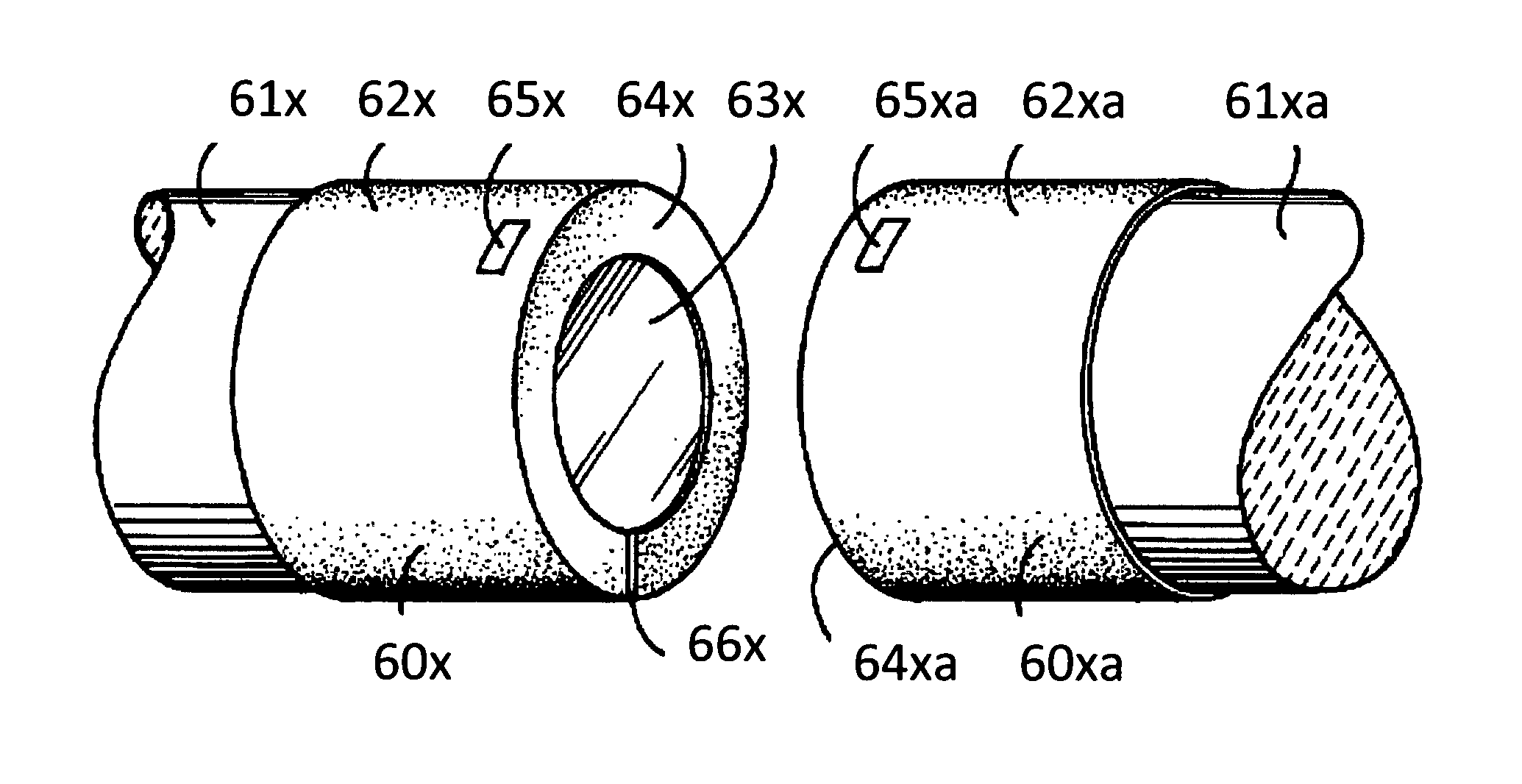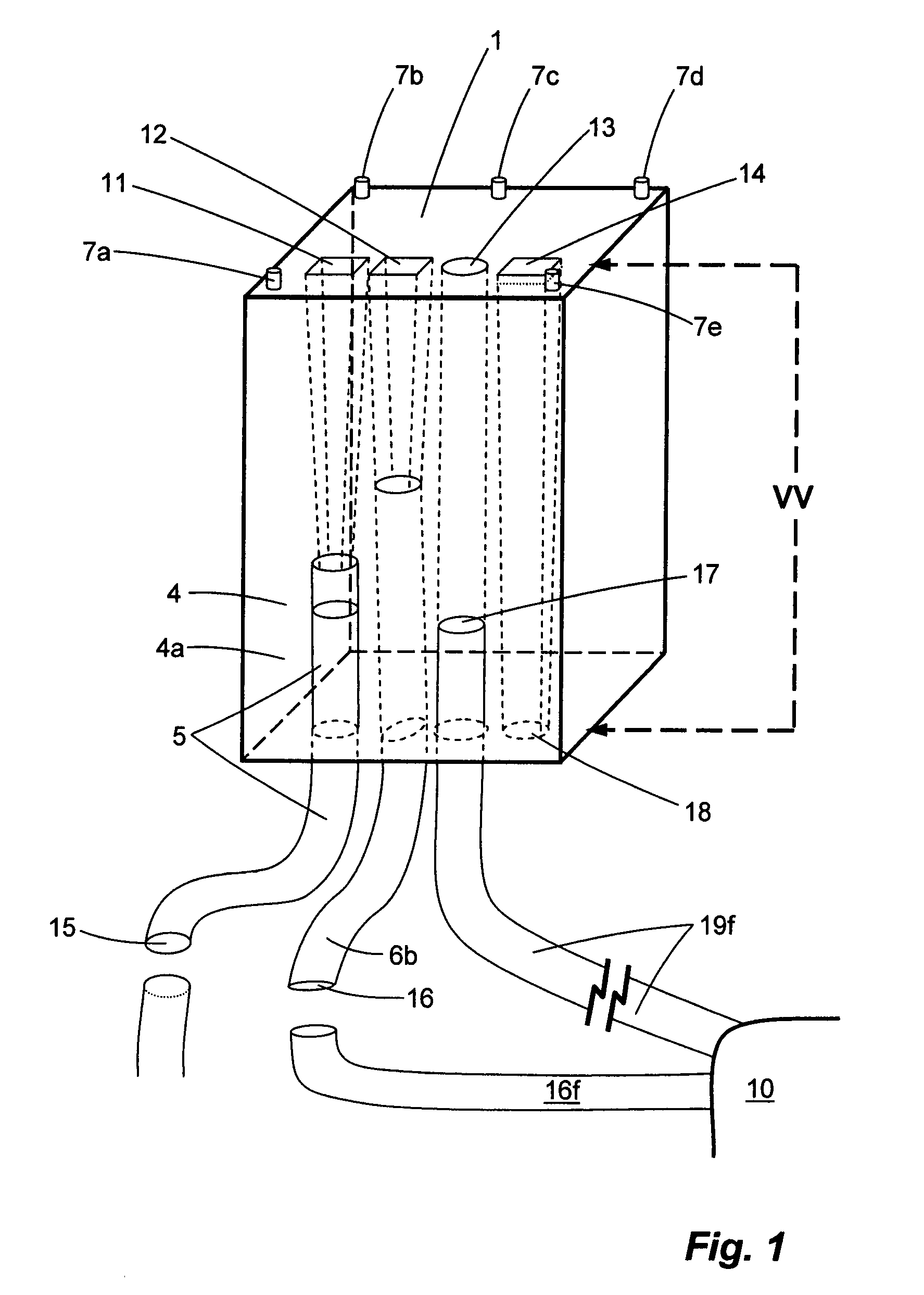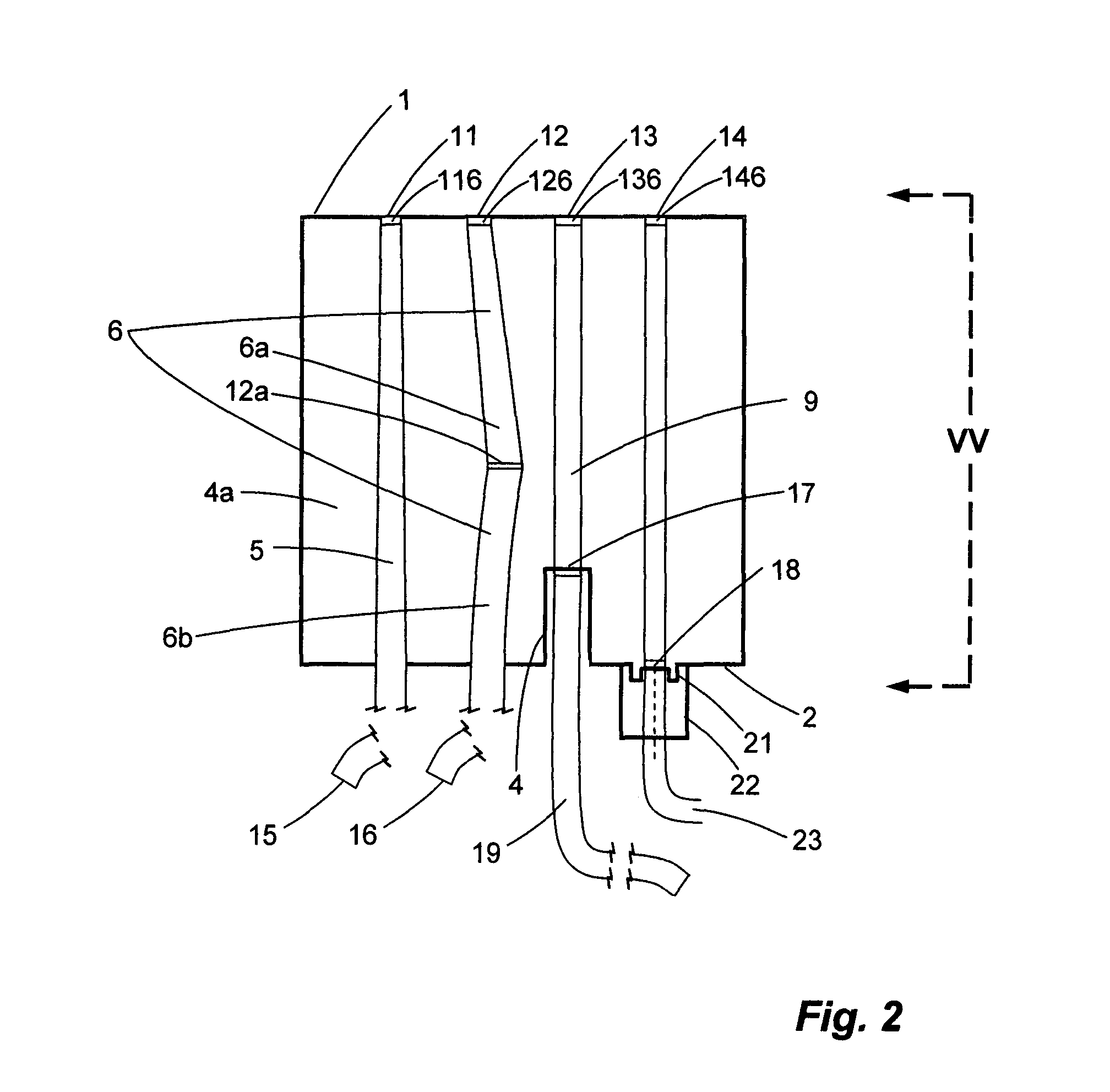Facile production of optical communication assemblies and components
a technology of optical communication and assembly, applied in glass making apparatuses, manufacturing tools, instruments, etc., can solve the problems of significant noise or effective signal erosion, limiting technology, and loss of optical performance, so as to reduce the potential for defective linkages, minimize the linkage time, and optimize the effect of performan
- Summary
- Abstract
- Description
- Claims
- Application Information
AI Technical Summary
Benefits of technology
Problems solved by technology
Method used
Image
Examples
Embodiment Construction
[0034]As shown by the exemplary embodiment in FIG. 1, interlink 4 links by providing optical channels, waveguides 5, 6 (an optical fiber formed by fusing fiber segment 6a to fiber segment 6b forming junction 12a) 8, and 9, between a planar waveguide (see planar waveguide unit 30 in FIG. 3) and at least one optical fiber system 10 of which optical fiber 19f is a part. Optical fiber 19f can be mated to waveguide 9, preferably an optical fiber, at interface 17, by inserting fiber 19f in channel or recess 4c of block 4a (See FIG. 2 for additional detail). For example, by using an appropriate epoxy, fiber 19f can be fused to fiber 9 with a filter disposed at the interface 17 therebetween. Optical fiber 18f can be mated to waveguide 8 at interface 18 by inserting fiber 18f into a locking mechanism 22 such as an optical seal housing. The locking mechanism 22 is coupled to face 2 of the interlink 4 by flanges 21 that engage the locking mechanism 22. Disposed at interface 18 can be a filter....
PUM
| Property | Measurement | Unit |
|---|---|---|
| length | aaaaa | aaaaa |
| angle | aaaaa | aaaaa |
| core diameter | aaaaa | aaaaa |
Abstract
Description
Claims
Application Information
 Login to View More
Login to View More - R&D
- Intellectual Property
- Life Sciences
- Materials
- Tech Scout
- Unparalleled Data Quality
- Higher Quality Content
- 60% Fewer Hallucinations
Browse by: Latest US Patents, China's latest patents, Technical Efficacy Thesaurus, Application Domain, Technology Topic, Popular Technical Reports.
© 2025 PatSnap. All rights reserved.Legal|Privacy policy|Modern Slavery Act Transparency Statement|Sitemap|About US| Contact US: help@patsnap.com



